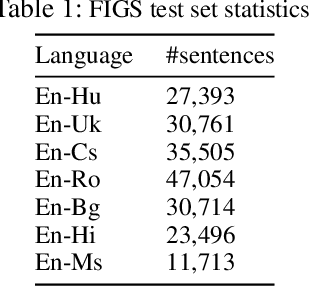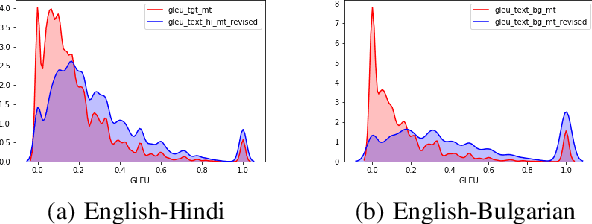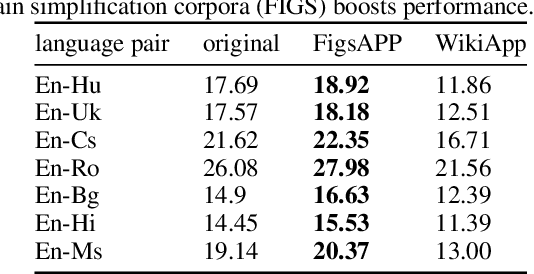Boris Chen
Match Cutting: Finding Cuts with Smooth Visual Transitions
Oct 11, 2022



Abstract:A match cut is a transition between a pair of shots that uses similar framing, composition, or action to fluidly bring the viewer from one scene to the next. Match cuts are frequently used in film, television, and advertising. However, finding shots that work together is a highly manual and time-consuming process that can take days. We propose a modular and flexible system to efficiently find high-quality match cut candidates starting from millions of shot pairs. We annotate and release a dataset of approximately 20k labeled pairs that we use to evaluate our system, using both classification and metric learning approaches that leverage a variety of image, video, audio, and audio-visual feature extractors. In addition, we release code and embeddings for reproducing our experiments at github.com/netflix/matchcut.
Simplify-then-Translate: Automatic Preprocessing for Black-Box Machine Translation
May 27, 2020



Abstract:Black-box machine translation systems have proven incredibly useful for a variety of applications yet by design are hard to adapt, tune to a specific domain, or build on top of. In this work, we introduce a method to improve such systems via automatic pre-processing (APP) using sentence simplification. We first propose a method to automatically generate a large in-domain paraphrase corpus through back-translation with a black-box MT system, which is used to train a paraphrase model that "simplifies" the original sentence to be more conducive for translation. The model is used to preprocess source sentences of multiple low-resource language pairs. We show that this preprocessing leads to better translation performance as compared to non-preprocessed source sentences. We further perform side-by-side human evaluation to verify that translations of the simplified sentences are better than the original ones. Finally, we provide some guidance on recommended language pairs for generating the simplification model corpora by investigating the relationship between ease of translation of a language pair (as measured by BLEU) and quality of the resulting simplification model from back-translations of this language pair (as measured by SARI), and tie this into the downstream task of low-resource translation.
 Add to Chrome
Add to Chrome Add to Firefox
Add to Firefox Add to Edge
Add to Edge